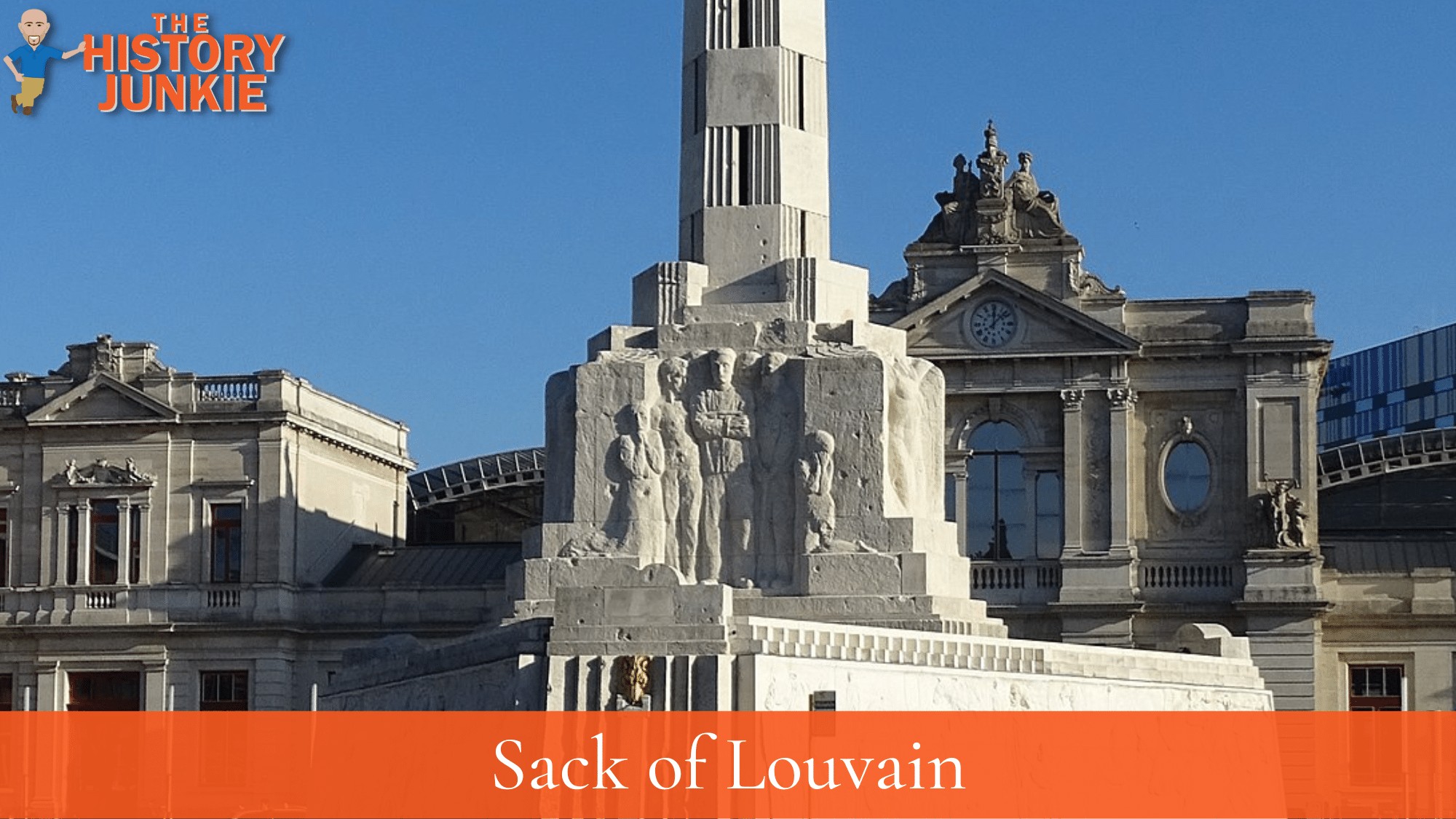The sack of Louvain came just days after the Massacre of Dinant.

The German Army had advanced through Belgium and had taken much of the country, including Louvain. The initial occupation of Louvain was peaceful until August 25, when a Belgian force from Antwerp attacked the rear of the city and had some success. The German rear unit withdrew into the city, which caused more confusion to those stationed within the city.
Jump to:
The confusion led to the Germans believing the Allies were launching a major attack, but this was not true. The citizens of Louvain were blamed for the invasion that never occurred and the confusion that happened that day.
The Massacre
What occurred next would again shock the international stage as German brutality on harmless citizens was enacted:
On August 25, although they had encountered no resistance from the population, German troops began a massacre. The massacre likely began when a group of German soldiers, panicked by a false report of a major Allied offensive in the area, fired on some fellow German troops. Civilians were shot or bayoneted, homes were set on fire, and some bodies showed signs of torture. Many of those killed were randomly dumped in ditches and construction trenches. The mayor of the city and the rector of the university were summarily executed.
At around 11:30 p.m., German soldiers broke into the university's library, which held significant special collections, including medieval manuscripts and books, and set it on fire. Within ten hours, the library and its collection were virtually destroyed. The fire continued to burn for several days. The rector of the American College of Louvain was rescued by Brand Whitlock, the U.S. ambassador, who recorded the rector's account of "the murder, the lust, the loot, the fires, the pillage, the evacuation and the destruction of the city" as well as the deliberate incineration of the library's incunabula. The burning of the University of Louvain's library caused the destruction of more than 230,000 books, including 750 medieval manuscripts. Personal libraries and the papers of notaries, solicitors, judges, professors, and physicians were also destroyed.
The killings and other acts of brutality took place throughout the next night and day. The day after that, the German army bombarded the town with five shells. The town was thoroughly pillaged, with many German officers and men engaging in mass plunder of money, wine, silver, and other objects of value and killing those who resisted or did not understand.
In the town, some 1,100 buildings were destroyed, variously estimated to constitute one-sixth or more than one-fifth of the town's structures. The town hall was saved because it was the site of the German headquarters. Some 248 civilians were killed, and most of the city's 42,000 residents were exiled by force into the countryside, with some being taken from their homes at gunpoint. Approximately 1,500 citizens of the town, including women, children, and four of the hostages, were deported to Germany in railway cattle-wagons. (Wikipedia)
As demonstrated earlier at other Belgian towns, including Dinant, the destruction of up to a fifth of Louvain's buildings merely comprised a standard German strategy of intimidating occupied Belgian territories as a means of securing maximum civilian cooperation.
Already widely regarded as an unacceptable strategy internationally, the treatment of Louvain provoked highly critical press headlines (which routinely referred to German barbarism and 'rivers of blood') and caused great concern in neutral capitals.
Conclusion
Had Germany won World War 1, then the actions at Dinant and Louvain would not have affected the terms of the Treaty of Versailles. However, it would be actions such as these that would cause European countries to come down hard on the Germans.
The sack of Louvain also hurt Germany's standing with neutral countries that had not joined the war. This was especially true of Italy, which had not declared war and began to separate itself from Germany and Austria.
